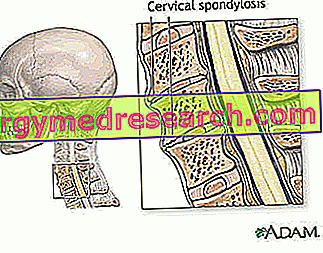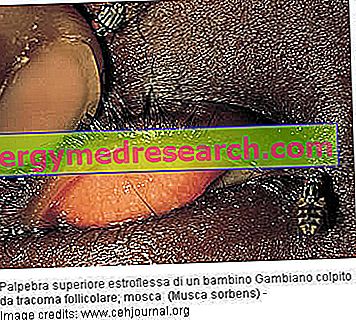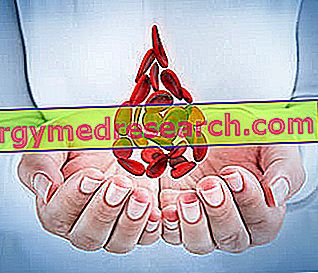Definition of spondylosis
Spondylosis is a degenerative disease that involves the cervical spine, vertebral bodies and contiguous intervertebral tissues.
It is a generalized arthrosis in the vertebral column, in which the progressive, albeit slow, deformation of the posterior vertebral joints and of the disc is expected.
Spondylosis should not be confused with spondylitis, although the two terms are mistaken for synonyms.
Incidence

Spondylosis target
The disease manifests itself preferentially at the cervical level: it speaks, therefore, of cervical spondylosis, a pathological phenomenon often correlated to further diseases, such as radiculopathy (pathological condition involving the nerves) and myelopathy (pathology of spinal interest).
Spondylosis can compromise the vertebral column in all its length, or concentrate only in some sections: in this case, the term spondylosis is refined in spondyloarthrosis . When joint pain involves the lumbar spine, this is called lumbar spondylosis .
Causes
As with the vast majority of diseases, familiarity, therefore genetic transmission, is a factor that greatly affects the manifestation of spondylosis. However, other elements have also been identified that play an important role in the appearance of spondylosis: repeated spine stresses and traumas, heavy work, strain, degenerative diseases affecting the spine, and surgical procedures such as, for example, removal of herniated discs (discectomy).
A very important factor should not be overlooked: the physiological increase in collagen compared to the gelatinous component of the disc, correlated to the progressive fibro-cartilaginous dehydration of the same; both of these factors weigh heavily on the symptoms derived from spondylosis.
Clinical evidence
The onset of spondylosis begins with a degenerative process of the intervertebral disc, increasingly thin and fragile, which causes an alteration of its "shock-absorbing" function.
The injuries to the spine are more or less serious and depend, above all, on the work done by the patient in the past: the masons, porterage workers and construction workers, for example, are subjected to continuous stress to the spine, or less intense, which can "be felt" during old age, causing sclerosis and irregularity of the bone tissue, flattening of the intervertebral discs, wear at the level of the cartilages between the joints and osteophytes (in which there is an accumulation of calcium in the articular cartilages).
With the evolution of spondylosis, there is a possible hard hernia of the disc (also called disco-osteophytic bar ), responsible for the progressive narrowing of the vertebral canal. [taken from Manual of orthopedics and traumatology, by Federico Grassi, Ugo Pazzaglia, Giorgio Pilato].
Symptoms
As we have analyzed, each person responds in a subjective way to the pathology, therefore it is almost impossible to outline a unique symptomatic picture of the disease.
When spondylosis is localized at the dorsal level of the column, the pathological condition gives no symptoms and the discovery of the disorder, more often than not, is the result of a random event.
The spondylosis could evolve causing an approach of the vertebrae and / or a calcification of the ligaments: in these cases, generally, the pain is bearable and scarcely mentioned.
In other situations, on the other hand, spondylosis could cause pain localized at a precise point, or generalized to the whole column, causing more intense suffering: it is the case of the sliding of the vertebrae, which could also generate a pseudo-invalidity.
Patients suffering from spondylosis often complain of " widespread stiffness and intermittent pain, which is accentuated in the morning ": pain and stiffness tend to fade during the day, with rest and heat.
therapies
It is possible to alleviate the pain caused by spondylosis by administering specific anti-arthrosic and anti-inflammatory drugs; however, the patient suffering from spondylosis should rest, avoid efforts, follow a correct diet, undergo specific physiotherapy massages, and practice stretching or swimming.
For patients with severe spondylosis, surgery could be the only chance to resolve.
To learn more: Drugs for the treatment of spondylosis »
Summary
To fix the concepts
Disease | spondylosis |
Description | Degenerative disease involving the cervical spine, vertebral bodies and contiguous intervertebral tissues |
| Incidence of spondylosis | It is estimated that about half of the over-50s and 90% of women over 60 suffer from spondylosis |
| Categories most at risk of spondylosis | Subjects who perform heavy jobs: porters, masons, construction workers |
Classification |
|
| Causes that favor spondylosis |
|
| Clinical picture of spondylosis |
|
| Symptoms of spondylosis | Pain of varying intensity Perception of generalized tension Accentuated pain in the morning Pseudo invalidity (severe cases) In some subjects, spondylosis is asymptomatic |
| Spondylosis therapies | Anti-arthritic drugs, anti-inflammatories Rest, swimming, stretching Physiotherapy Follow a correct diet Surgery |



